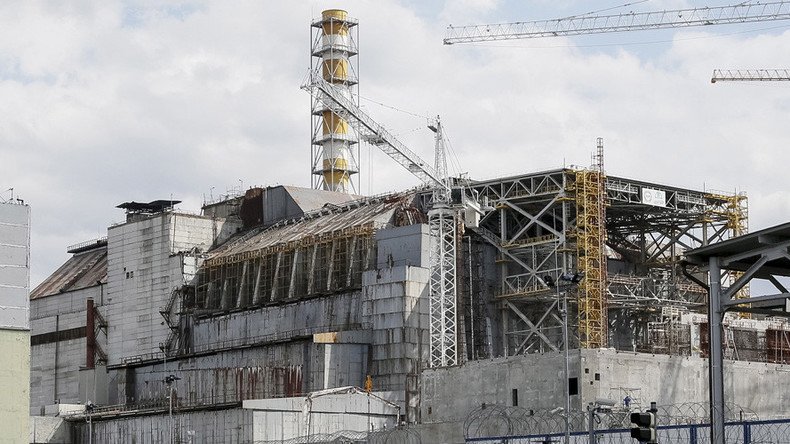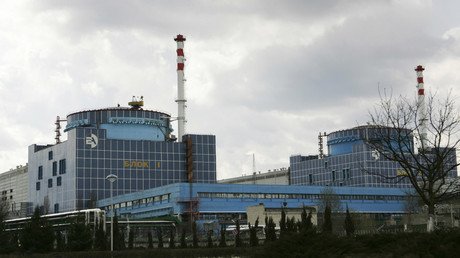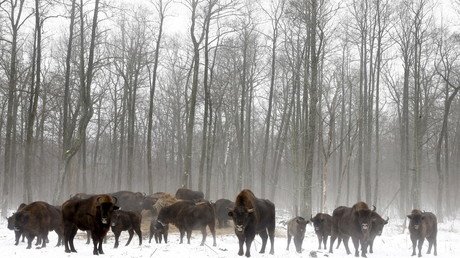‘Nuclear safety is no-politics zone’: Chernobyl plant head urges Russia-Ukraine cooperation

The head of the Chernobyl Nuclear Power Plant has urged Russia and Ukraine to start rebuilding relations by restoring cooperation in tackling the aftermath of the worst nuclear disaster in history, which marks its 30th anniversary this year.
CHERNOBYL: FALLOUT 30 (SPECIAL PROJECT)
Chernobyl NPP CEO Igor Gramotkin shared his thoughts on the plant’s future in an interview with the Ukrainian newspaper Zerkalo Nedeli published on Friday.
“Russia and Ukraine are going through difficult times, but we must now figure out how to build the relationship in the future, and why not start restoring it by jointly looking for solutions to a common problem, namely, eliminating the consequences of the Chernobyl catastrophe,” Gramotkin said.
He stressed that “nuclear radiation safety is an area that is beyond politics.”
Relations between Moscow and Kiev have reached historic lows since a government coup in Ukraine in 2014 led to Crimea’s subsequent reunification with Russia and a conflict between the newly installed authorities and incalcitrant locals in the eastern Donbass region.
According to Gramotkin, Ukrainian President Petro Poroshenko has expressed regret over Russia’s experts leaving the site.
Despite the sad state of their political relations, Ukraine has continued to pursue some cooperation with Russia in the field of nuclear safety, although its scope used to be far greater, the plant’s CEO said.
“Many of Rosatom’s [Russian State Atomic Energy Corporation] subsidiaries long worked alongside us at Chernobyl. Now we only continue working with the Eastern European branch of Rosatom to stay informed in matters concerning the proper shutdown of nuclear facilities, work with spent nuclear fuel, and radioactive waste.”
Gramotkin added that he would like to see prominent Russian research institutes back at the Chernobyl site, as “Russian research institutes, including the Kurchatov Institute, NIKIET, and VNIPIET are the flagships, which were directly related to Chernobyl and historically worked on our site.”
A core meltdown completely destroyed Reactor №4 of the Chernobyl Nuclear Power Plant on April 26, 1986, when Ukraine was still part of the USSR. A huge radioactive leak affected areas in places as far off as Europe and Norway. Since then, the reactor has been enclosed in a concrete and lead sarcophagus that prevents further radioactive leaks. However, the confinement is decades old now, and slowly crumbling away.
It is currently impossible to disassemble the destroyed reactor completely due to a lack of technology, but Gramotkin says it is still his “life’s mission” to make the site safe again. He said the crippled reactor will be covered with a brand-new protective confinement, known as the New Shelter or New Safe Confinement (NSC), which is scheduled to be finished by November of 2016.
“We are now in the final phase of constructing the New Safe Confinement, or the Arch... We are building end walls within the Shelter that come out of it and seal the NSC, which will be pulled on top of it,” he said.
“We’re also finishing up the work within the NSC itself – installing infrastructure and technological facilities for life-support systems management. Our plan is to cover the fourth reactor with the NSC by November 2016.”
The installation of the NSC will conclude the second stage of a project intended to transform the disaster zone into an ecologically safe system. The third stage will involve dismantling unstable structures and extracting fuel mass.
Gramotkin expressed optimism, saying that “losses at the Chernobyl NPP are over, we’re a step away from victory.”
The Chernobyl meltdown on April 26, 1986 is considered to be the worst nuclear power plant disaster of all time. More than 300,000 people were evacuated from the Soviet town of Pripyat near the Chernobyl Nuclear Power Plant in Ukraine due to nuclear contamination. Forty-one people perished as a direct result of the disaster – 32 of whom died of Acute Radiation Syndrome within a few months of the tragedy. It is still unknown how many more have died of medical complications attributable to the accident. According to the International Atomic Energy Agency (IAEA), the projected death toll stands at 4,000 people. A study by Global Research put the figure at some 985,000, all of whom allegedly died due to cancers caused by the radiation.
The hazardous area surrounding the power plant was established as the Chernobyl Exclusion Zone, to which access is restricted in order to reduce the spread of radiological contamination and conduct monitoring activities. It is still one of the most radioactively contaminated places on earth.














